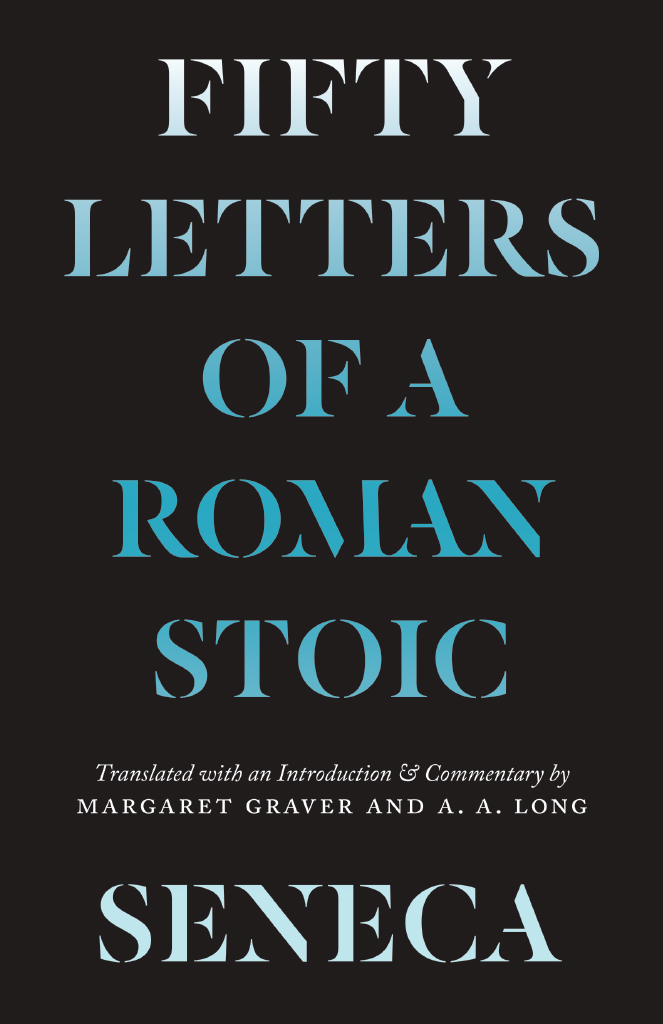
Fifty Letters of a Roman Stoic
Seneca
Fifty Letters of a Roman Stoic
Translated with an introduction and commentary by Margaret Graver and A. A. Long
The University of Chicago Press Chicago and London
The University of Chicago Press, Chicago 60637
The University of Chicago Press, Ltd., London
2021 by The University of Chicago
All rights reserved. No part of this book may be used or reproduced in any manner whatsoever without written permission, except in the case of brief quotations in critical articles and reviews. For more information, contact the University of Chicago Press, 1427 E. 60th St., Chicago, IL 60637.
Published 2021
Printed in the United States of America
30 29 28 27 26 25 24 23 22 21 1 2 3 4 5
ISBN-13: 978-0-226-78276-8 (cloth)
ISBN-13: 978-0-226-78293-5 (paper)
ISBN-13: 978-0-226-78309-3 (e-book)
DOI: https://doi.org/10.7208/chicago/9780226783093.001.0001
Library of Congress Cataloging-in-Publication Data
Names: Seneca, Lucius Annaeus, approximately 4 B.C.65 A.D., author. | Graver, Margaret, translator, writer of supplementary textual content. | Long, A. A., translator, writer of supplementary textual content.
Title: Seneca : fifty letters of a Roman Stoic / Lucius Annaeus Seneca ; translated with an introduction and commentary by Margaret Graver and A. A. Long
Other titles: Epistulae morales ad Lucilium. Selections. English. 2021 | Fifty letters of a Roman Stoic
Description: Chicago ; London : The University of Chicago Press, 2021. | Includes bibliographical references and index.
Identifiers: LCCN 2021009510 | ISBN 9780226782768 (cloth) | ISBN 9780226782935 (paperback) | ISBN 9780226783093 (ebook)
Subjects: LCSH: EthicsEarly works to 1800. | StoicsEarly works to 1800.
Classification: LCC PA6665.A1 2021 | DDC 876/.01dc23
LC record available at https://lccn.loc.gov/2021009510
 This paper meets the requirements of ANSI / NISO Z39.48-1992 (Permanence of Paper).
This paper meets the requirements of ANSI / NISO Z39.48-1992 (Permanence of Paper).
Contents
The surviving manuscripts of Senecas Letters on Ethics contain no fewer than 124 letters, ranging in length from a single page to fifteen or more. Seneca writes about so many subjects and in so many different styles that any selection is bound to be partial, since every letter adds something fresh about the authors extraordinary mind and literary virtuosity. Nonetheless, in choosing fifty letters for this volume, we have tried to illustrate the range and variety of Senecas subject matter, from the experiences of his daily lifethe noisy neighbors, the footrace with a little child, the roar of a packed arenato his intellectual interests in literature and philosophy. Our explanatory notes supply fuller information on people, places, and ideas mentioned in the text. These notes are adapted from the much longer commentary in our complete edition of the Letters on Ethics (Graver and Long 2015), with expansion at some points to serve the needs of readers who may be meeting Seneca for the first time. An asterisk in the main text (*) indicates an at the back of the book.
Apart from one or two minor revisions, the translation given here is identical to the one in our earlier book. The Latin text followed is that of Reynolds (1965b). In those few places where we differ from Reynolds as to what Latin text best represents Senecas intentions, the word or phrase that renders the different Latin wording is marked with a superscript circle (), and our reading is given in the section. The translation itself aims primarily to convey Senecas ideas exactly, while also conveying his ever-changing style and mood. Although word-for-word rendering is rarely possible (and would often be misleading), we do strive for consistency in translating key Latin words, taking pains especially with philosophical terms.
In preparing the explanatory notes, we have relied mainly on our own judgment, but we are often indebted to earlier commentators for assistance in locating the relevant ancient evidence. For historical and biographical matters, we have frequently consulted the comprehensive Brills New Pauly (Cancik and Schneider 200210). Portions of the translation and notes have been improved as well by the acumen of undergraduate research assistants funded through the James O. Friedman Presidential Scholars Program at Dartmouth College: Brian Howe, John Kee, Michael Konieczny, Karen Laakko, Aaron Pellowski, Lea Schroeder, and Leslie Shribman.
The titles given to individual letters are supplied by us for ease of reference; they are not authorial.
Margaret Graver and A. A. Long
The best way to learn about Seneca, as a person and as a philosopher, is to read his letters. Begun late in his life, the Letters on Ethics adhere to a format that he himself devised and that proved especially congenial to his talents. These are serious writings, using the intimacy of the personal letter as a vehicle for a searching examination of values and life choices. In this, they resemble the letters of the philosopher Epicurus, which Seneca had studied extensively. Unlike Epicurus, though, Seneca addresses all his letters to one individual, his younger friend Gaius Lucilius Iunior. The collection does not include any letters written by the friend, and yet Lucilius is constantly made present to us through frequent references to his life experiences and his questions about philosophy. As readers, we come to feel that we know both men at a deep level. Still, these letters are not a private correspondence like Ciceros letters to his friend Atticus. They are meant to be shared with a wider public, to bring comfort in difficult times, intellectual engagement, and sheer entertainment to those outside the authors own circle.
In this work we do not find much of the story of Senecas life as reported later by the historians Tacitus and Dio Cassius: his tutoring the young Nero, his work as a speechwriter, and the charges of his political opponents. After all, he wrote the Letters in the two to three years before his death in 65 CE , after he had withdrawn entirely from the imperial court. Nonetheless, there are elements of autobiography in the work. Seneca describes his early experience as a vegetarian, his travels in and around Pompeii, his daily routine. He mentions his wife Paulina, his brother Gallio, and his deceased father, whom we know as Seneca the Elder. At age sixty-five, he tells us what it is like to come near dying from shortness of breath. More than once he sketches an incident that makes him look ridiculous: his cluelessness on visiting an aging property of his own, his effort to cross the Bay of Naples in choppy seas, his sitting down in a schoolroom among teenagers. We do not get the big events of his life so much as the small but significant ones.
Reading more closely, we can collect some information about his personal situation. We see that he owns a great deal of property since he mentions visiting three of his own villas. While his personal habits are austere, he makes it clear that for someone like him, simple living is a matter of choice, not economic necessity. Similarly, it is by choice that he now has no influence on the affairs of state. Early in the correspondence, he establishes a parallel between the political career he has now abandoned and that of Lucilius, a man familiar with the imperial court who is still active as civil governor of Sicily. As Seneca urges his friend to withdraw from his public position and devote himself to a life of study, we catch the tensions that might attend such a decision. Those tensions were very real, for those who had entered public service were expected to stay on, not only by their peers but also by a powerful and unpredictable ruler. That same dynamic was to be explored later by Tacitus, who writes it as a dialogue between Seneca and the emperor Nero himself.
Next page
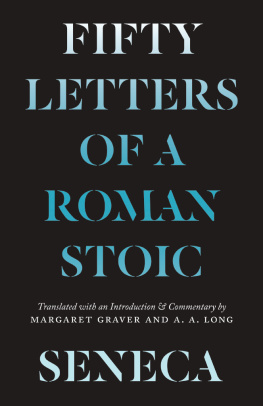


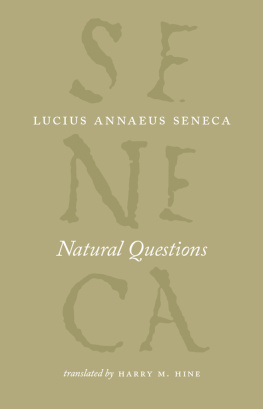
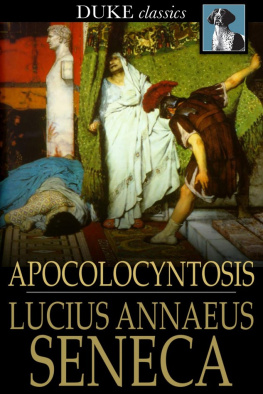

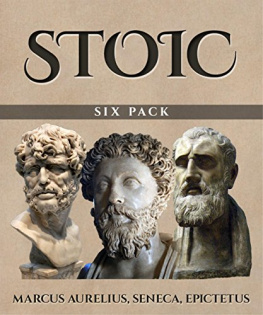
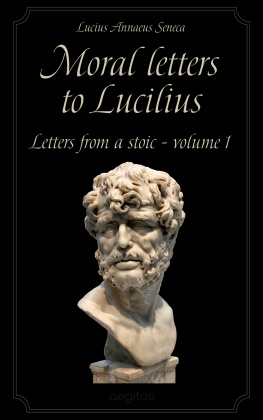
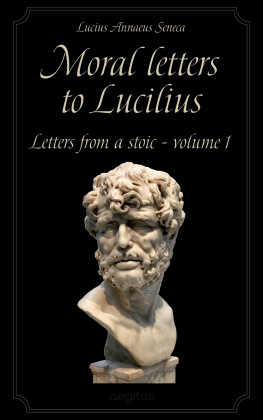

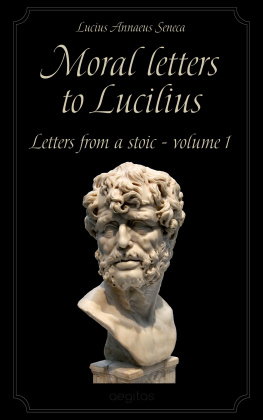


 This paper meets the requirements of ANSI / NISO Z39.48-1992 (Permanence of Paper).
This paper meets the requirements of ANSI / NISO Z39.48-1992 (Permanence of Paper).